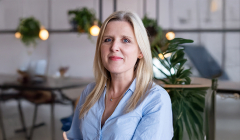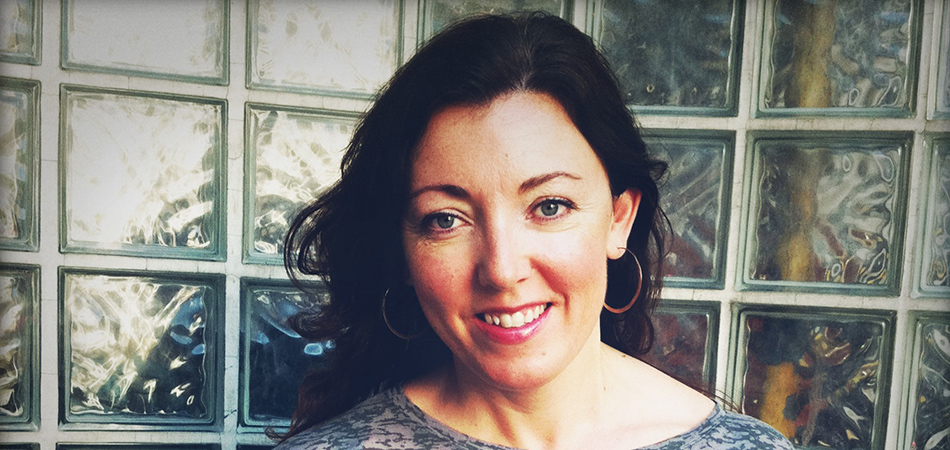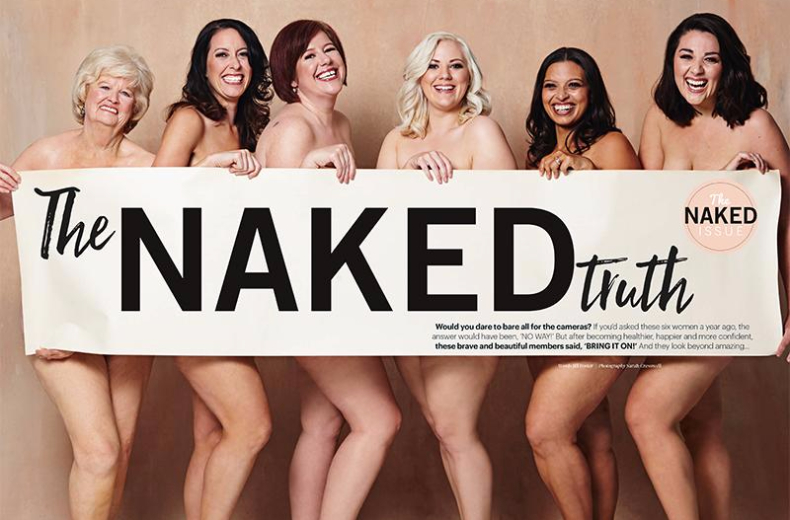
Reimagining internal comms in 2025 to power cultural endurance
Your employees are your best advocates, says Jo Singleton, Employee Communications and Engagement Director at Smarts.
Chief Creative Officer, SevenC3


Career to date:
2009, Creative Creative Officer, SevenC3
2008, Editor, Eve Magazine
2006, Editor NPD, EMAP
2005, Celebrity Director, OK! USA
2004, Executive Editor, US Weekly Magazine
1999, Editor, OK! Magazine
Nic McCarthy: Our clients will buy two things from us: strategy and creative, to market their brands and products to both current and potential customers. It’s my job to make sure the creative part of that is the very best it can be. But that’s only possible with the right team. I’m really focused on finding and nurturing the right creative team - you need a very eclectic mix of skills and talents. It’s an amazing job though – I love it.
Nic McCarthy: I knew I wanted to be the editor of a magazine when I was 13. I went to UCL but I dropped out to go to the London College of Printing to train and qualify as a journalist. Then I started working at magazines. I became an editor when I was 25. I edited Majesty magazine above a pub in Hallam Street. My big break I guess came when the then editor of OK! magazine, Martin Townsend, hired me to be his deputy.
I edited OK! for 5 years which was a very, very tough job and then I was headhunted to go and be the Editor-in-Chief of US Weekly in New York. There was a brilliant Editor-in-Chief there called Janice Min and she was about to have a baby. And in New York, if you worked in magazines, then anyway, you didn’t really have babies.
But Janice had her baby early. So, I went out there, on my own and lived in a hotel for a month and then my husband Chris came out with our son Alex who was only 1.
Then I got pregnant again, on purpose. And I came home and went to work at EMAP on secret projects and helping them with their existing magazines.
Next, I became the editor of Eve magazine, which was my first monthly. Working on a glossy magazine is completely different to working on a tabloid weekly, but it was brilliant.
I suppose the valuable things that I learned in publishing were firstly a kind of creative craft, what makes a great story? How do you visualise that story through design, photography, film, illustration? And then, something that’s been really useful in content marketing, is a kind of an unblinking focus on what audiences want, because if you don’t have that, as an editor, you can’t sell magazines and you get sacked.
The other thing was how to work with creative teams, trying to create an environment where people can be themselves, not too many rules. Lots of the best creative people can be difficult to work with, they can be a pain in the arse. That doesn’t matter if they’re talented and you get on well together.
“Lots of the best creative people can be difficult to work with, they can be a pain in the arse. That doesn't matter if they're talented and you get on well together."
Nic McCarthy: I’d edited, at that stage then, the weekly that I’d loved the most in the world, and I was heartbroken when Eve closed. The newsstand was a really tricky place so I went to see a few Editorial Directors and they gave me some really good advice. They said, why don’t you think about content marketing? Because maybe you can make more of a difference there.
The reason I went to Seven is because of Sean King, our CEO. I was afraid of working in a really corporate place. I knew the world of brands and clients would be different. But it was really important to me to work in a creative, editorial environment. Sean is very entrepreneurial, really down to earth, loads of energy. If you have a great idea, he’ll let you pursue it.
Nic McCarthy: Yes, but creative people are creative people. I suppose being a weekly editor prepared me commercially. You’re responsible for your sales and you’re used to P&Ls and having business responsibility.
The world of clients and brand was a total shock. It took a while to get used to having other people have a say in what we were doing. Figuring out how to take your expertise, put it together with their expertise and do something amazing together. That was a big adjustment.
Nic McCarthy: We’re doing some really interesting work at the moment with micro-influencers. We have a product called the Seven Collective that’s all about shared value and co-creation. We don’t pay influencers to work on behalf of brands. Instead, we figure out ways to work together that gives something to them, and something for the brand. We have a fantastic Head of Influencer Marketing called Emma Rees who heads that up.
We did a campaign for Vitality, the insurance company. They had a new event, VitalityMove, which is a combination of fitness and music. This one is headed up by Jess Ennis and Trevor Nelson. We handpicked 12 different influencers, or Movers as we called them, and lived with them through social content as they prepared for the Move event. We gave them access to training sessions with Jess, to health MOTs, kit and technology to track their progress. And they shared the experience with their fans.
Our team redesigned Sainsbury’s Magazine, which we also publish. We have this amazing new Art Director called Cassie Eade. Her philosophy is that magazine design should capture the zeitgeist of a particular era, whatever era it’s in. Her view is that food is the new rock n’roll and that attitude should be reflected in the designs.
Nic McCarthy: I manage an under eleven grassroots football team. My daughter Orla plays football. There’s an amazing campaign called #WePlayStrong. It’s a pan-European campaign from UEFA. Oh my god it’s so gorgeous. I’m getting a bit goosebumpy just talking about it.
I think anything that encourages girls to play sport is incredible. Girl’s football has had an image problem. I know from managing a team that some mums and dads are not sure about the image of football. Maybe they think it’s not right for their daughter. But I think if you looked at that campaign it would change your mind.
“I think lots of brands will start to work lilke that. I don't know whether you'd call it content first? It's certainly more integrated, through the line, with not such a hard focus on television first. I think that does require a different kind of agency, certinaly a different kind of creative team."
Nic McCarthy: We were bought a year and a half ago by a European agency called C3. They’re doing some really interesting work in Germany at the intersection of technology and journalism. They’ve built this state of the art newsroom for Porsche. It’s a digital marketing portal and it bundles together all the comms, like a multimedia hub for Porsche, with a proper team of automotive journalists that staff it.
Nic McCarthy: I think, as content marketers, we’re in a really interesting space. For instance, one of our clients is Weight Watchers and they have changed their agency mix to two agencies, Seven and Beyond, who work in partnership to do all their comms. Weight Watchers have changed their comms model to be content first, rather than the old-fashioned model of, let’s invent a TV campaign.
The way we work now is very integrated, it’s very through the line. We’ll come up with a strategic and creative idea but we’re very focused on delivering it in an integrated way.
I think lots of brands will start to work like that, I don’t know whether you’d call it content first? It’s certainly more integrated, through the line, with not such a hard focus on television first. I think that does require a different kind of agency, certainly a different kind of creative team.

Nic McCarthy: We’d like to do more big hitting, integrated comms work for brands. We are doing that already for Weight Watchers and we’re starting to explore that new comms model for other brands and that’s so enjoyable.
For the agency itself, I’d like us to build an even more diverse creative team with all sorts of people; behavioural psychologists, technologists, film makers. The more diversity, the more difference, the better.
Nic McCarthy: It’s both a delight and a nightmare. I think it’s a bit more collaborative than it used to be. We have rules about pitching. We won’t pitch unless the client gives us a face-to-face meeting, because if they won’t talk to us and tell us what they want, how are we supposed to guess?
Nic McCarthy: I’m really inspired by the people I work with, which I know is massive cheese but I really am.
My husband is a rapper, so I love hip-hop. I’m really inspired by music. There’s this amazing song called Black Spiderman by this LA rapper called Logic. It’s so beautiful.
I also love books. I took Orla my daughter, my 11-year-old, to see Zadie Smith speaking at the Royal Festival Hall last week and that was incredible.
How can brands give customers the tools to express their own identity?
I think giving me a tool to express myself, I don’t think that that feels quite right. I feel like that’s what social platforms are for.
ASOS is a good example. We worked with ASOS for five years and they never did any advertising. All of their success was through content and a big part of that was they created an actual social platform where fashionable young women could show off their style.
You could say the same about food. Sainsbury’s Magazine’s most successful hashtag is something very simple called #IMadeThis. People will cook things from the magazine, photograph them and post them.
Looks like you need to create a Creativebrief account to perform this action.
Create account Sign inLooks like you need to create a Creativebrief account to perform this action.
Create account Sign in